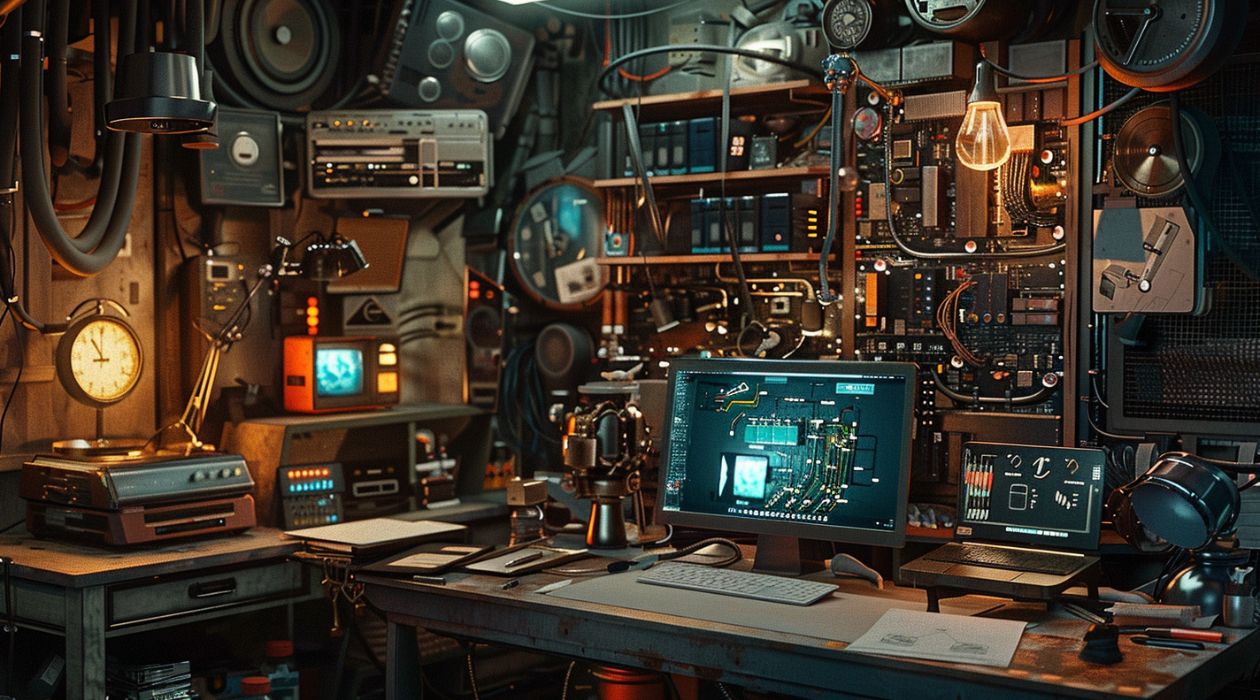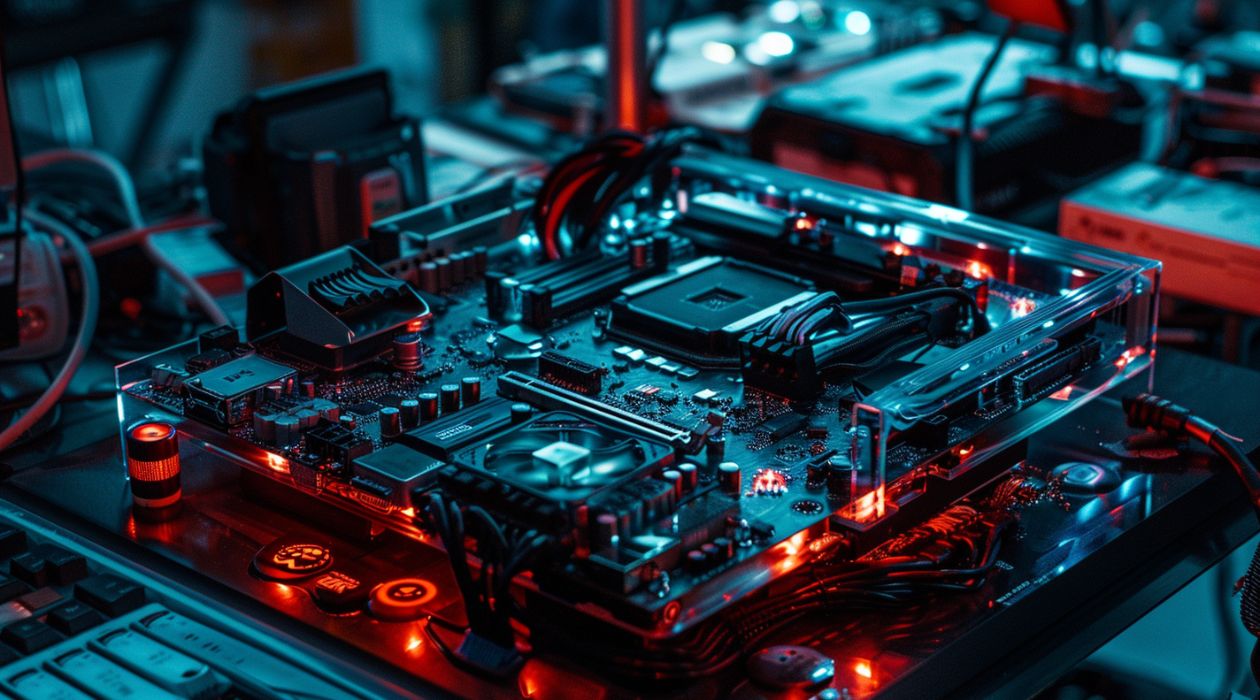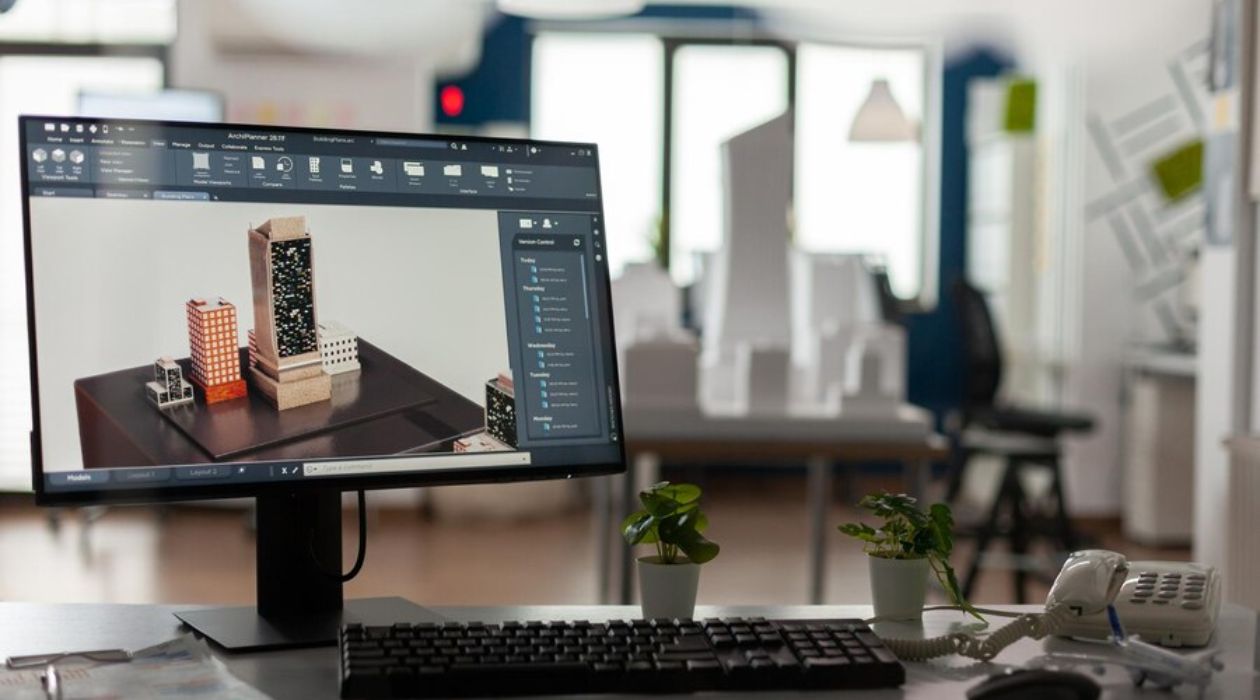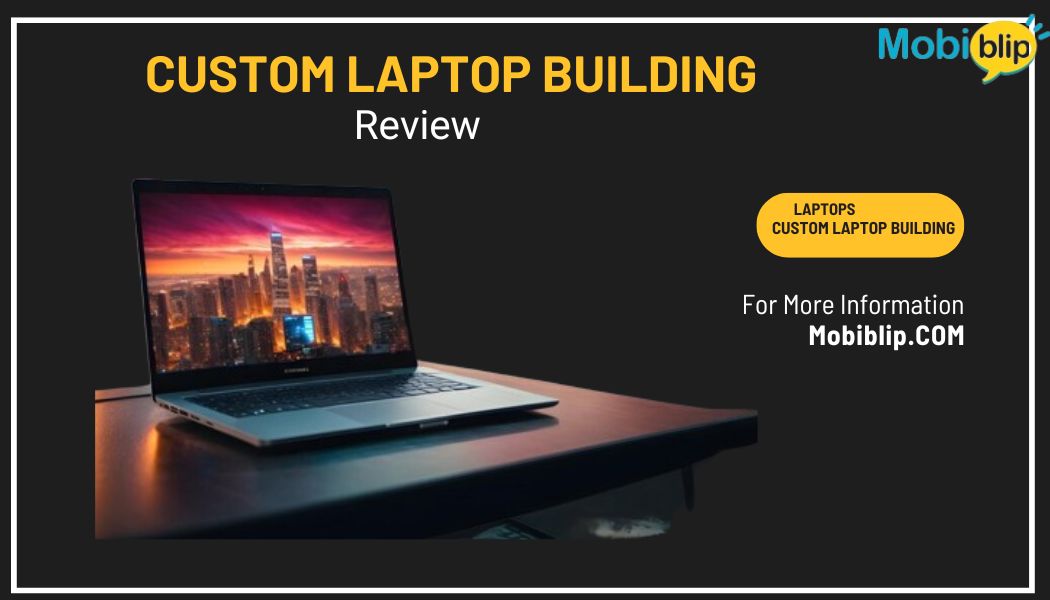Custom Laptop Building: A Beginner’s Guide

There’s a growing buzz around custom-built PCs, but have you heard of custom-built laptops? While pre-built laptops remain the norm, a niche community is taking hold for those who crave the ultimate control over their mobile machine. But unlike its desktop counterpart, building a laptop presents a unique set of challenges.
Let’s delve into why building a laptop is a different beast altogether compared to building a desktop PC.
Feasibility of DIY Laptop Building

The million-dollar question: Can you truly build a laptop from scratch? Technically, yes. With the right knowledge, tools, and a whole lot of patience, you can source individual components and assemble them yourself. However, this path is fraught with challenges:
- Component Compatibility: Laptops require miniaturized components specifically designed for tight spaces. Finding compatible parts and ensuring they work together seamlessly is a significant hurdle.
- Soldering Savvy: Unlike desktops, many laptop components are soldered directly onto the motherboard. This intricate process requires advanced soldering skills and specialized equipment. A single mistake could render the entire motherboard useless.
- Forget Flexibility: Customization options are limited. Unlike desktops with interchangeable parts, laptops often lack the modularity to swap out components like motherboards or graphics cards.
While building from scratch might be impractical for most, there are alternative approaches to satiate your customization desires:
- The Barebones Option: Certain manufacturers offer “barebones” laptops – chassis with basic components like the motherboard and CPU. You can then choose and install your own RAM, storage, and operating system for a more personalized experience.
- Upgradability Matters: Many modern laptops allow for some level of user upgrades. Look for models with accessible RAM slots and storage bays to boost performance or capacity down the line.
So, while building a laptop from scratch might be a project for seasoned tinkerers, there are still ways to get your hands dirty and create a custom laptop experience.
Instructions on Building a Custom Laptop

Crafting a custom laptop is an exciting yet intricate endeavor. This guide will walk you through the process, from meticulous planning to the thrill of powering on your personalized machine. However, keep in mind this is geared towards experienced users comfortable with technical challenges.
Research and Plan:
- Needs Assessment: What will you use your laptop for? Video editing demands a powerful processor and graphics card, while basic tasks require less muscle. Define your needs to guide component selection.
- Compatibility Check: Research is key! Not all components are created equal, especially in the compact world of laptops. Scour manufacturer websites and forums to ensure seamless compatibility between parts.
- Barebones vs Upgradable: Decide between a barebones chassis or a pre-built laptop with upgradeable components. Barebones offer more control, while upgradable laptops provide a balance between customization and ease.
Source Your Parts:
- Reputable Retailers: Stick to trusted vendors specializing in laptop components. Avoid unreliable sources that might sell incompatible or faulty parts.
- Double-check Compatibility: Before hitting checkout, meticulously verify each component aligns with the others. Utilize online compatibility checkers or consult technical forums for reassurance.
Assembly Time (Proceed with Caution!):
- Safety First: ESD (electrostatic discharge) precautions are crucial. Invest in an anti-static wristband and work in a static-free environment to prevent damaging delicate components.
- Tools of the Trade: You’ll need a set of small screwdrivers, thermal paste for CPU installation, and possibly soldering equipment for advanced customization.
- Follow the Manual: Most barebones laptops come with assembly manuals. If not, consult the manufacturer’s website or online resources for detailed disassembly and reassembly instructions specific to your model.
- Take it Slow: Building a laptop is a meticulous process. Rushing can lead to errors. Be patient, methodical, and double-check your connections at every step.
Testing and Troubleshooting:
- Power Up: The moment of truth! Once assembled, connect your laptop to a power source and hit the power button.
- Boot Up Blues? If you encounter issues, remain calm. Refer to your motherboard manual or online troubleshooting guides for common problems and solutions.
- Stress Test: Once operational, put your laptop through its paces with stress testing software to identify any stability or performance bottlenecks.
Remember, building a custom laptop requires a significant investment of time, effort, and technical expertise. If you’re new to hardware tinkering, consider starting with a simple desktop PC build to hone your skills before tackling a more intricate laptop project. But for those up for the challenge, the satisfaction of creating a machine tailored to your exact needs is an unparalleled reward.
Pros and Cons of Building a Custom Laptop
Building a custom laptop offers a unique blend of advantages and disadvantages. Here’s a breakdown to help you decide if it’s the right path for you:
Pros:
- Tailored Performance: You get exactly what you need. By selecting specific components, you can optimize your laptop for demanding tasks like video editing or gaming, or prioritize portability with lighter components.
- Cost Savings (Potentially): High-end pre-built laptops often come with hefty price tags. Building a custom laptop can be more cost-effective, especially if you prioritize performance over brand names. You only pay for the power you need.
- The Joy of Customization: Unleash your inner tinkerer! With a custom build, you can personalize the look and feel of your laptop with unique cases, keyboards, and even lighting options (depending on the model).
Cons:
- Technical Expertise Required: Building a laptop is no easy feat. It requires a strong understanding of hardware components, their compatibility, and the delicate assembly process. Mistakes can be costly.
- Limited Warranty and Support: Unlike pre-built laptops with comprehensive warranties, custom builds might come with limited support from the barebones chassis manufacturer. Troubleshooting issues can fall on your shoulders.
- Compatibility Headaches: Finding components that work seamlessly together in a compact space can be a challenge. Extensive research and careful compatibility checks are crucial to avoid a non-functional machine.
Building a custom laptop is an exciting prospect for those who crave ultimate control and a personalized machine. However, it requires significant technical expertise and comfort with troubleshooting potential issues.
For casual users or those new to hardware tinkering, a pre-built laptop with upgradeable components might be a better option. You’ll still get some level of customization while benefiting from manufacturer warranties and support.
Ultimately, the decision hinges on your technical comfort level, budget, and the level of customization you desire.
Finding Parts and Components
Building a custom laptop starts with gathering the right parts. Here’s a breakdown of essential components and where to find them, along with key considerations to guide your selection process:
Essential Components:
- Central Processing Unit (CPU): The brain of your laptop, responsible for overall processing power. Consider core count, clock speed, and integrated graphics capabilities.
- Graphics Processing Unit (GPU): If you plan on video editing or gaming, a dedicated GPU is crucial. Integrated graphics on CPUs offer basic functionality but lack the power for demanding tasks.
- Random Access Memory (RAM): RAM dictates how many applications you can run smoothly. 16GB is a good starting point for most users, with 32GB ideal for power users.
- Storage: Solid State Drives (SSDs) offer blazing-fast speeds but limited capacity. Hard Disk Drives (HDDs) provide ample storage but are slower. Consider a combination (SSD for OS and programs, HDD for bulk storage) for a balance.
- Display: Screen size, resolution, and panel type (IPS for best viewing angles) are key factors. Touchscreens add another layer of customization but drain battery life.
- Keyboard: Choose between chiclet-style keyboards or ergonomic keyboards with better wrist support. Consider backlighting for low-light environments.
- Battery: Look for batteries with high mAh (milliampere-hours) ratings for longer life.
Finding Reputable Retailers:
- Online Retailers: Newegg, Amazon offer a vast selection of laptop components. Ensure sellers have a proven track record and good customer reviews.
- Laptop Parts Specialists: Some companies specialize in laptop parts like Clevo or Schenker Technologies. These might offer better compatibility filters and support for specific barebones models.
Choosing Wisely: Compatibility is King!
When selecting components, prioritize compatibility above all else. Here are some pointers:
- Barebones Compatibility: Double-check which CPU sockets and RAM types your chosen barebones chassis supports.
- Component Synergy: Ensure your CPU, RAM, and storage work seamlessly together. Use online compatibility checkers or consult technical forums for reassurance.
- Future-Proofing: Consider future upgradability when possible. Opt for RAM slots and storage bays that allow for future expansion.
Remember: While these retailers offer a wide range of parts, always prioritize compatibility with your specific barebones chassis. Don’t hesitate to reach out to the retailer or manufacturer for guidance if needed.
In Crux
Building a custom laptop is an alluring proposition for those who crave the ultimate in control and personalization. It allows you to tailor a machine to your exact needs, be it a powerhouse for editing or a sleek, portable workhorse. However, the path is fraught with challenges. The intricate assembly process, potential compatibility issues, and limited warranty support demand a strong technical foundation.
For casual users or those new to hardware tinkering, a pre-built laptop with upgradeable components might be a more practical option. You’ll still get some level of customization while benefiting from manufacturer warranties and support.
The decision ultimately boils down to your technical prowess, budget priorities, and the level of control you desire over your machine. This guide has equipped you with the knowledge to explore both paths – the pre-built convenience or the custom challenge.
So, weigh the pros and cons, delve into the world of components, and decide if building your dream laptop is the adventure you seek. Remember, the most important factor is finding a solution that perfectly aligns with your needs and preferences. Happy computing!
How much did you like our detailed Guide to Custom Laptop Building: Pros, Cons, and How-To? Also, please share these Blogs with your friends on social media.
Related Blogs
















